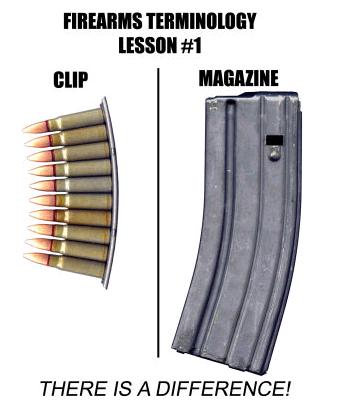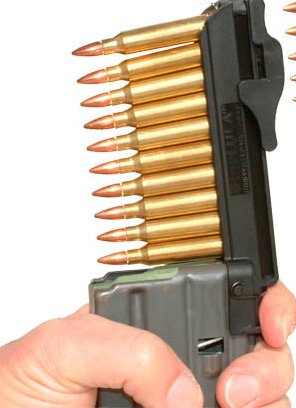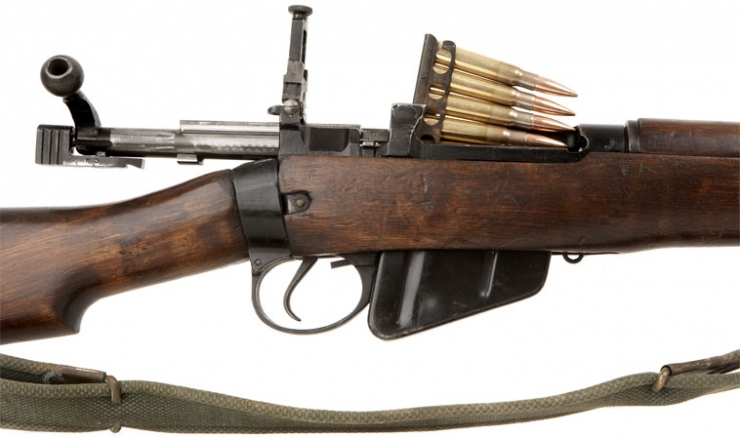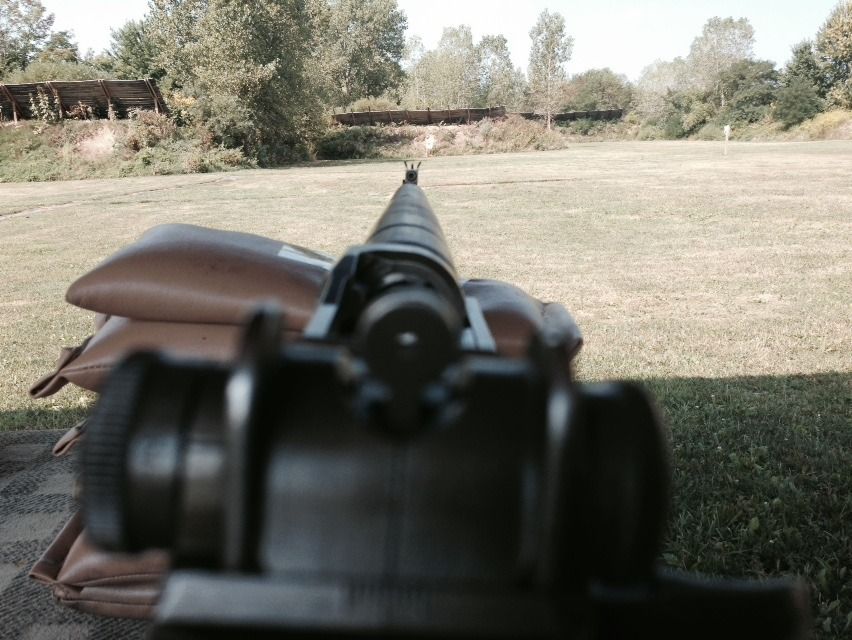|
|
Post by the light works on Aug 25, 2015 14:33:32 GMT
I was taught by a civilian instructor, and my training was the only time a mag hits the ground is if there is a problem with it. you bring the new mag up before you drop the old one - palm one and feed the other and drop the empty into your "empty mag" pocket. Were you stood up or prone?... My training was always lying down, so its not so much as drop, as put to one side. (Out of the way..) this was pistol instruction. the reasoning behind it was if the mag was bad, you dropped it and left it to prevent trying to use it again. |
|
|
|
Post by OziRiS on Aug 25, 2015 18:44:48 GMT
Were you stood up or prone?... My training was always lying down, so its not so much as drop, as put to one side. (Out of the way..) this was pistol instruction. the reasoning behind it was if the mag was bad, you dropped it and left it to prevent trying to use it again. Denmark being a very small country with a very limited military budget, we've always been taught to never drop our mags. Always put the empty one back in the pouch, so you can reaload it again later. The times I posted earlier for our tactical reloading drills were including time putting the spent mags back in the mag pouch. |
|
|
|
Post by silverdragon on Aug 26, 2015 8:09:52 GMT
this was pistol instruction. the reasoning behind it was if the mag was bad, you dropped it and left it to prevent trying to use it again. Denmark being a very small country with a very limited military budget, we've always been taught to never drop our mags. Always put the empty one back in the pouch, so you can reaload it again later. The times I posted earlier for our tactical reloading drills were including time putting the spent mags back in the mag pouch. In UK, on our ranges, we cleaned up after shooting had finished , to collect all the scrap to either be re-used or recycled... all the copper brass and whatever was melted down and remade into new things. Some say British Leyland got that metal which was why their cars fell apart so quickly... |
|
|
|
Post by OziRiS on Aug 26, 2015 10:12:00 GMT
Denmark being a very small country with a very limited military budget, we've always been taught to never drop our mags. Always put the empty one back in the pouch, so you can reaload it again later. The times I posted earlier for our tactical reloading drills were including time putting the spent mags back in the mag pouch. In UK, on our ranges, we cleaned up after shooting had finished , to collect all the scrap to either be re-used or recycled... all the copper brass and whatever was melted down and remade into new things. Some say British Leyland got that metal which was why their cars fell apart so quickly... We still do that as well  |
|
|
|
Post by the light works on Aug 26, 2015 13:54:35 GMT
Denmark being a very small country with a very limited military budget, we've always been taught to never drop our mags. Always put the empty one back in the pouch, so you can reaload it again later. The times I posted earlier for our tactical reloading drills were including time putting the spent mags back in the mag pouch. In UK, on our ranges, we cleaned up after shooting had finished , to collect all the scrap to either be re-used or recycled... all the copper brass and whatever was melted down and remade into new things. Some say British Leyland got that metal which was why their cars fell apart so quickly... And some say it was all melted down to make his sphericals... All we know is he's called the STIG.yes, it's the rule to clean up brass here, too. however, the rule on dropping mags is based on the idea that if you drop them on the ground, they may be damaged and it is hard to fix a damaged mag. - but you drop a damaged mag, so you know at a glance it is bad, and should be taken out of service. |
|
|
|
Post by silverdragon on Aug 27, 2015 7:42:42 GMT
Was there no attempt to fix it?... We were encouraged to fix things, but then again, it was the REME thing, we were engineers, we fixed things, its our job. The Stig wouldnt drive BL..?..., but some say he did drop a piano or two on them.  Its a Tuna... yeah, a Piano Tuna.... [deal with it.] [ok, you can stop groaning now...] |
|
|
|
Post by the light works on Aug 27, 2015 13:42:13 GMT
Was there no attempt to fix it?... We were encouraged to fix things, but then again, it was the REME thing, we were engineers, we fixed things, its our job. The Stig wouldnt drive BL..?..., but some say he did drop a piano or two on them.  Its a Tuna... yeah, a Piano Tuna.... [deal with it.] [ok, you can stop groaning now...] sure you could send engineers out after the firefight to pick up damaged mags and try to true them up again. it would only cost twice what a new mag would cost... the point is: if your gun misfeeds during a firefight, you clear it. if it misfeeds again, you dump the mag. if it then feeds correctly, you know you can't trust the dumped mag. can it be fixed? maybe. would you bet your life on it? |
|
|
|
Post by tom1b on Aug 31, 2015 5:43:08 GMT
One major problem with the "get a grip" myth on the grenade: Adam knew he was in no danger. It didn't matter what little surprise Jamie had planned for Adam. Adam's life was never in any danger and neither were his kids. Performance Decrement Under Psychological StressClick that title on the page. Mitchell Berkun conducted experiments in 1962 that would be considered inhumane today. He actually set up situations were members of the military thought they were about to die: plane crash & artillery bombardment. They were never in real danger, but didn't know it. Once they were told they were about to die, their cognitive functions were tested. Their cognitive functions were greatly reduced under the stress of imminent death. You can also look at the 1972 DC-10 incident, American Airlines Flight 96 vs the 1974 DC-10 crash, Turkish Airlines Flight 981. The incident had a captain that thought something like this might happen when he saw the design of the plane. He practiced trying to fly the jet without any control of the control surfaces in the simulator. When his door blew and severed all the control cables, he kept calm and brought the plane down with no fatalities. The Turkish crash didn't have a captain that kept his calm. When his door blew, he crashed and 346 people on board died. It is the 4th worst accident in aviation history. You want an accurate test? The test subject must actually believe they will die if they let go. |
|
|
|
Post by OziRiS on Aug 31, 2015 6:12:59 GMT
One major problem with the "get a grip" myth on the grenade: Adam knew he was in no danger. It didn't matter what little surprise Jamie had planned for Adam. Adam's life was never in any danger and neither were his kids. Performance Decrement Under Psychological StressClick that title on the page. Mitchell Berkun conducted experiments in 1962 that would be considered inhumane today. He actually set up situations were members of the military thought they were about to die: plane crash & artillery bombardment. They were never in real danger, but didn't know it. Once they were told they were about to die, their cognitive functions were tested. Their cognitive functions were greatly reduced under the stress of imminent death. You can also look at the 1972 DC-10 incident, American Airlines Flight 96 vs the 1974 DC-10 crash, Turkish Airlines Flight 981. The incident had a captain that thought something like this might happen when he saw the design of the plane. He practiced trying to fly the jet without any control of the control surfaces in the simulator. When his door blew and severed all the control cables, he kept calm and brought the plane down with no fatalities. The Turkish crash didn't have a captain that kept his calm. When his door blew, he crashed and 346 people on board died. It is the 4th worst accident in aviation history. You want an accurate test? The test subject must actually believe they will die if they let go. Agreed. And I'd even go as far as to say there were two more significant factors contributing to the result. 1: Adam is experienced with weapons, including grenades, so he knows how they work. Even though he didn't do it, he knew he could have just as well placed it on the chair under his leg, put it against the walls in the corner of the room and held it there with his foot and a whole lot of other solutions to the problem. Point is, he knows grenades, which significantly decreased his fear of it. The woman in the TV show probably didn't know anything about grenades, other than they go boom and then you die. 2: The second significant factor might even have been that Adam's a man and the person in the clip was a woman. Not to be misogynistic here, but on average, women have a bigger tendency to completely panic in dangerous situations than men. That's not to say that men simply don't panic, because many do, but odds are a little better that a man might have found a solution to the problem. Especially if he, like Adam, is used to finding solutions to problems under strange or extreme conditions. Even if he can't implement the solutions he comes up with, just thinking about solutions instead of dwelling on his impending death will significantly lower his state of panic. There's also the very real possibility that the woman in the clip simply didn't have as much strength in her hand as Adam does. In other words, Adam being able to hold onto the grenade without cramping (cue jokes about Adam's outfit and menstrual cramps) proves nothing in terms of how long the woman could've held on. And retesting with a woman holding the grenade won't do that either, unless they get a woman with arthritis or severe carpal tunnel syndrome or something, because we have no way of knowing how strong the woman in that clip was and if her character was written as having any disabilities, making it harder for her to hold on. All in all it was a completely useless test. |
|
|
|
Post by the light works on Aug 31, 2015 14:00:03 GMT
One major problem with the "get a grip" myth on the grenade: Adam knew he was in no danger. It didn't matter what little surprise Jamie had planned for Adam. Adam's life was never in any danger and neither were his kids. Performance Decrement Under Psychological StressClick that title on the page. Mitchell Berkun conducted experiments in 1962 that would be considered inhumane today. He actually set up situations were members of the military thought they were about to die: plane crash & artillery bombardment. They were never in real danger, but didn't know it. Once they were told they were about to die, their cognitive functions were tested. Their cognitive functions were greatly reduced under the stress of imminent death. You can also look at the 1972 DC-10 incident, American Airlines Flight 96 vs the 1974 DC-10 crash, Turkish Airlines Flight 981. The incident had a captain that thought something like this might happen when he saw the design of the plane. He practiced trying to fly the jet without any control of the control surfaces in the simulator. When his door blew and severed all the control cables, he kept calm and brought the plane down with no fatalities. The Turkish crash didn't have a captain that kept his calm. When his door blew, he crashed and 346 people on board died. It is the 4th worst accident in aviation history. You want an accurate test? The test subject must actually believe they will die if they let go. Agreed. And I'd even go as far as to say there were two more significant factors contributing to the result. 1: Adam is experienced with weapons, including grenades, so he knows how they work. Even though he didn't do it, he knew he could have just as well placed it on the chair under his leg, put it against the walls in the corner of the room and held it there with his foot and a whole lot of other solutions to the problem. Point is, he knows grenades, which significantly decreased his fear of it. The woman in the TV show probably didn't know anything about grenades, other than they go boom and then you die. 2: The second significant factor might even have been that Adam's a man and the person in the clip was a woman. Not to be misogynistic here, but on average, women have a bigger tendency to completely panic in dangerous situations than men. That's not to say that men simply don't panic, because many do, but odds are a little better that a man might have found a solution to the problem. Especially if he, like Adam, is used to finding solutions to problems under strange or extreme conditions. Even if he can't implement the solutions he comes up with, just thinking about solutions instead of dwelling on his impending death will significantly lower his state of panic. There's also the very real possibility that the woman in the clip simply didn't have as much strength in her hand as Adam does. In other words, Adam being able to hold onto the grenade without cramping (cue jokes about Adam's outfit and menstrual cramps) proves nothing in terms of how long the woman could've held on. And retesting with a woman holding the grenade won't do that either, unless they get a woman with arthritis or severe carpal tunnel syndrome or something, because we have no way of knowing how strong the woman in that clip was and if her character was written as having any disabilities, making it harder for her to hold on. All in all it was a completely useless test. I see an immediate second factor in the DC-10 crashes. I took multiple sailing classes in college, and so I learned a lot about boat conrtol, sail control, and weather and lee helm. I was in a boat accident in the surf where I caught a wave on the bows before I was prepared, which caused the rudders to be sheared off and lost. I was still able, by manipulating the sails, to sail it out of the surfline, turn it around, and bring it safely back to shore. in the case of the airliners, one pilot had practiced controlling the plane without use of the control surfaces and the other had not. beyond the life or death confidence, there is the simple matter of knowing how to do it. as for the grenade, there is also the factor that the woman was a victim type. victims panic - it is a standard movie trope. the things Adam did to relieve the discomfort, she would have been too terrified to do. |
|
|
|
Post by silverdragon on Sept 1, 2015 4:07:18 GMT
The time I came off a motorway onto a very well iced curve in the road, and went round that sideways, "Drifting" as you would say, in a 10 tonner....
How the hell do you do that?... my co-driver has not had skid pan training and had gone a colour of white only a Brides Dress could match.
But I have had the experience of "drifting" on ice....
Not for me the pick-a-spot-in-the-scenery, I just went with the flow, altered what control I had to suit, drifted round to a straight bit and carried on as if that was normal.
For me, it was.
I had to stop to let my co-driver calm down....
He said if that had been him, he would have been an accident happening.
Experience is worth everything
|
|
|
|
Post by oscardeuce on Sept 2, 2015 2:00:18 GMT
Please it is magazine. You load a magazine from a clip, the magazine loads the firearm.
The magazine on a Mauser 98 pistol is internal so a clip is used to load the magazine.
Semantics I know, but use the correct terms please.
As to the quick reload and dropping the magazine, it is done like the "pro" and the mags dropped to the ground.
Like was noted you should keep track of shots fired, so you are not surprised when you are empty and can reload faster.
|
|
|
|
Post by the light works on Sept 2, 2015 2:40:33 GMT
was that one of us who made the clip error, or the show?
as for reloading faster.
|
|
|
|
Post by oscardeuce on Sept 2, 2015 12:26:47 GMT
The show
In big letters across the screen
|
|
|
|
Post by the light works on Sept 2, 2015 14:16:10 GMT
The show In big letters across the screen okay, I'd hate to think one of US slipped up like that. |
|
|
|
Post by Cybermortis on Sept 2, 2015 17:49:50 GMT
Modern weapons combine both the clip and magazine into one detachable unit. So you can actually use either 'clip' or 'magazine' correctly depending on personal preference.
|
|
|
|
Post by OziRiS on Sept 2, 2015 20:20:02 GMT
Modern weapons combine both the clip and magazine into one detachable unit. So you can actually use either 'clip' or 'magazine' correctly depending on personal preference. I'm sorry, but that's just not correct.  Why the person who made this pic chose to put a stripper clip for an AK47 beside a STANAG magazine is beyond me, but it still illustrates the point very well. It's all very simple. Clips are used to load magazines. Magazines are either stand alone parts of a firearm that can be detatched, or they're integrated in the firearm, but either way, the clip is nothing more than a storage strip for cartridges before they're loaded into the weapon's magazine. For the stand alone, detatchable magazine, this is how it works:  The clip is inserted into a speed loader, which is placed on top of the magazine and the cartridges can then easily be pushed into the magazine. The clip is then removed from the speed loader, making room for another clip. For a weapon with an integrated magazine, like the Lee Enfield 303, this is how it works:  As I said, the magazine is integrated into the rifle and is loaded by help of a clip. The clip is placed on top of the magazine and the rounds are pushed into the magazine. The clip is then removed and the bolt pushed forward to load a cartridge into the chamber. From the magazine, not the clip. The clip/magazine confusion probably arose due to the unusual design of the M1 Garand where the clip was actually left inside the magazine of the rifle and ejected when the last round was fired, but nonetheless, the clip and the magazine were still two seperate and different things. The magazine was integrated into the rifle and the clip pushed into the magazine. |
|
|
|
Post by oscardeuce on Sept 2, 2015 22:02:38 GMT
Modern weapons combine both the clip and magazine into one detachable unit. So you can actually use either 'clip' or 'magazine' correctly depending on personal preference. Sorry Cyber but no. The terms are not interchangeable. The reply above me explains it pretty well. There are guns with internal magazines (Garand, Broomhandle Mauser C98, Springfield 1903, Enfield). You. Still load the magazine (internal or external)from a clip. For the Garand you use an "en block clip" to feed the internal magazine. I was punching some holes with one a few days ago.  |
|
|
|
Post by OziRiS on Sept 2, 2015 23:06:29 GMT
For the Garand you use an "en block clip" to feed the internal magazine. what it's called! Couldn't remember the name of that clip to save my life!  I was punching some holes with one a few days ago. You can just go ahead and color me green with envy!  I haven't had an opportunity to fire a Garand in 17 years. I've fired a lot of guns in my life, but for some reason, that was the most memorable. For the life of me, I can't figure out what it is, but there's just something special about that rifle. |
|
|
|
Post by oscardeuce on Sept 2, 2015 23:24:22 GMT
The one above was built in 1943 by Springfield. Was the first one I purchased in 1986 from the U.S. department of civilian marksmanship for the hefty some of $125.
Tis worth a bit more today.
You are more than welcome to join me someday. We can punch holes together.
|
|